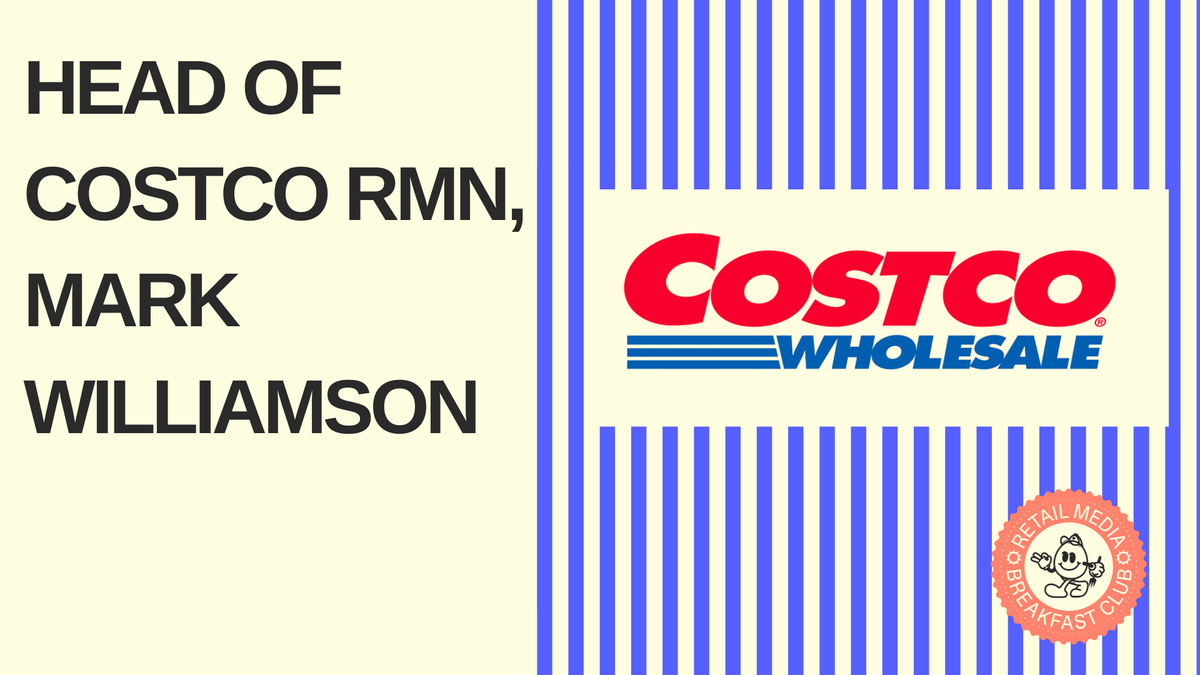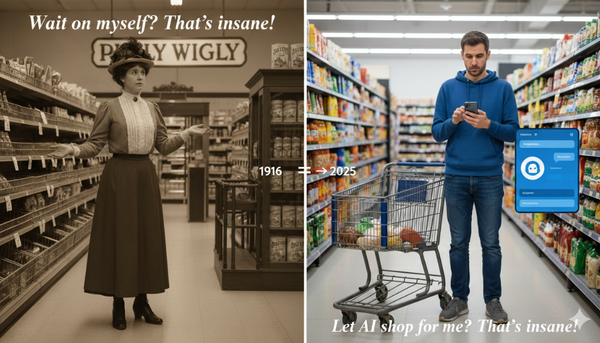My Notes From an Interview with Costco's RMN leader, Mark Williamson

Remember the kid at school who was super cool, because they just didn't give a rats? When all the other kids were trying so hard to fit in and have the latest and greatest brands to wear, making excrutiating decisions over weekend plans. But the cool kid just rolls out of bed with tousled hair, saunters into class, drops their bag on the ground while everyone watches with envy?
That's Costco's retail media network. Costco is, by the admission of the leader of their RMN Mark Williamson, a "last mover" in the world of retail media. While the Amazons of the world are brazen in their pursuit of monetizing every pixel of every asset they own or can otherwise art-of-the-deal into a partnership, Costco cooly assesses the situation from arms length and decides to sit a couple of rounds out before casually giving a secret signal allowing its secret admirers to fawn over them.
Too much? Well yes, its Costco. You always leave with more than you planned for.
This aloofness extends to Costco's interest in sharing their retail media philosophy or roadmap with the media, so I was shocked and delighted to come across an incredible interview with Mark on the Middlemen podcast. (Which is, by the way, the best kept secret in retail media podcasts right now. I especially love the pre-interview banter between the hosts - check it out on Youtube.)
Mark, someday I hope you will talk to me ;) but for now, here are my takeaways from the interview from the Middlemen podcast.
1. Membership First, Media Second
Costco's entire approach to retail media can be summed up in one principle: membership comes before monetization. Every time.
"We have to look at everything through the lens of our member promise and of the reputation that we have with our members," Williamson says. While other retailers scramble to capitalize on the "shiny object" of retail media dollars, Costco deliberately hangs back.
This restraint is strategic.
"We definitely view ourselves as having last mover advantage. We've been suspiciously absent from the broad retail media ecosystem for several years."
Instead of optimizing for advertiser performance metrics, Costco focuses on whether advertising enhances the member experience. The advertising value proposition is remarkably simple: "If we can deliver more relevant messaging to members, wherever they're consuming content—that should drive traffic, that should drive shops, and that should drive topline sales."
This focus creates scarcity, which paradoxically makes Costco's retail media offerings more valuable. In the crowded retail media landscape, Costco stands out by not trying so hard.
2. Merchants Rule the Kingdom
At Costco, the merchant-supplier relationship remains sacrosanct, something that differentiates them from competitors who have repositioned their retail media networks as standalone media businesses.
"We will always be retailers to our core. Which means the merchants are still the center of our universe—regardless of the source of funding," Williamson says.
This merchant-centric approach forces Costco to confront a fundamental question that many retailers struggle with. As Williamson puts it: "The question comes down, from a fundraising perspective—is the merchant the face of the ask, or is the retail media team the face of the ask?"
Making the merchant, not the media team the one who asks for ad dollars welds retail-media spend to the same goals that drive Costco’s core business: member value and product velocity. This alignment preserves supplier trust and prevents the margin-chasing silo mentality that erodes both shopper experience and long-term sales.
To navigate this challenge, Costco has built a "Growth Team" specifically designed to be the connective tissue between traditional merchant relationships and newer agency-driven opportunities. These growth managers are "accountable to a VP of merchandising and to all the buying teams within that vertical."
The contrast with other retail media networks is stark. While many retailers have created separate P&Ls and disconnected their media teams from core retail operations, Costco's Growth Team must answer to merchants about the fundamental retail impact of any campaign.
When reporting results to the chief merchant, Williamson explains that simply stating profit margin isn't sufficient. Instead, his team needs to demonstrate how media investments translated into actual sales growth for Costco, not just a bump to the RMN.
3. Performance Over Profit Margins
Perhaps the most refreshing aspect of Costco's approach is their focus on what actually works for suppliers rather than what maximizes their own margins.
"Where I think retailers get sideways in this conversation is if you're trying to hit a margin target," Williamson says. That approach often leads retailers to push higher-margin advertising products regardless of performance.
This echoes what I've heard elsewhere in the industry. Andreas Reiffen from the adtech company Pentaleap (disclaimer, Pentaleap is a client) told me how retailers had been more focused on monetizing every search term than providing relevant results:
“Initially, we lost pitches because [RMNs] said, ‘Yeah, but my advertisers want to show ads, and just because they don’t rank in the organic results, it’s silly not to capitalize on that.’ And we always said — that’s a feature, not a bug, because you have users who want to buy stuff they’re actually interested in. You don’t want to show a tablet when someone searches for a laptop. If you do that, you’ll kill more of your business. But people lived in their retail media silo and didn’t care about the rest of the business.”
Costco takes the opposite approach. When a supplier has budget to spend, Williamson's team doesn't automatically push them toward digital options with the highest margin for Costco. Instead, they make recommendations based on proven performance:
"If someone says, 'Hey, I've got $100,000—what should I do with it?' I'm like, 'Have you tried to get an endcap? Because those work pretty well. Have you tried sampling? Because that works pretty well.'"
In a world where many retail media networks are becoming increasingly complex and opaque, Costco's straightforward approach to measurement and value stands out. By focusing on what actually drives sales rather than what drives the highest margins, they're building advertiser trust that will serve them well as their retail media offerings mature.
The cool-kid act is no accident. By keeping the member promise sacred, letting merchants steer the wheel, and measuring success in sales and not RMN margin, Costco has built the one retail-media network advertisers want to sit with at lunch. Sometimes doing less is the ultimate flex.





